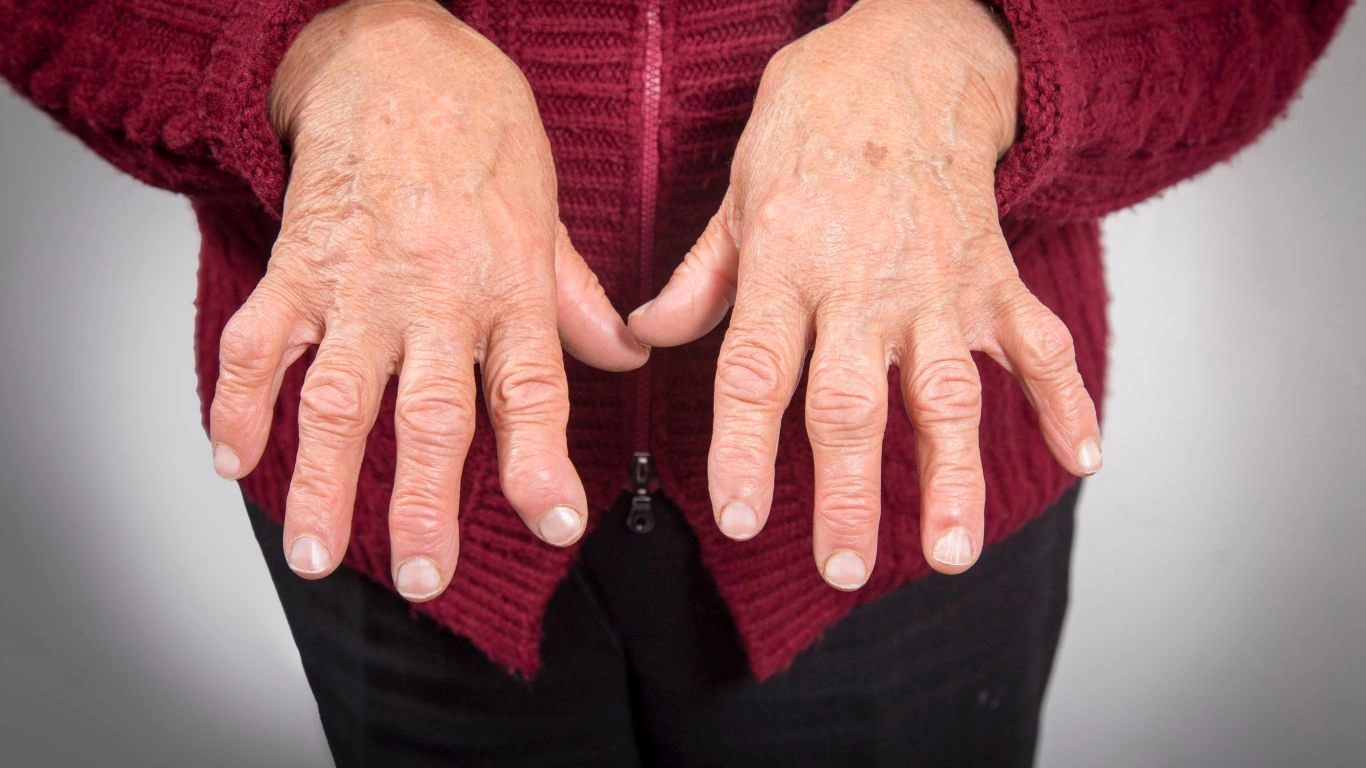Can Rheumatoid Arthritis Cause Anemia? The Surprising Truth You Need
Can rheumatoid arthritis cause anemia? This question comes up a lot in my exam rooms, and honestly, it’s a good one. If you’re living with rheumatoid arthritis (RA) or caring for someone who is, you’ve probably noticed that fatigue seems to follow it like a shadow. But what’s really behind that bone-deep exhaustion? As a rheumatology nurse practitioner, I’ve had countless conversations with patients who are confused about why they’re so tired all the time—even when their joint pain is manageable. One sneaky culprit? Anemia.
Understanding the Link Between Rheumatoid Arthritis and Anemia

First off, let’s break down the basics. Rheumatoid arthritis is an autoimmune condition—your body’s immune system mistakenly attacks your own joints, causing inflammation. That inflammation isn’t just confined to your knees or hands. Nope, it’s systemic. That means it can affect other parts of your body, including your bone marrow, which is where red blood cells are made. So, yes—RA absolutely can cause anemia. And not just one kind, either.
So What Is Anemia, Exactly?
When I explain this to patients, I often compare red blood cells to delivery trucks carrying oxygen. If you don’t have enough trucks on the road, your body isn’t getting what it needs to function. That’s anemia in a nutshell—a shortage of healthy red blood cells. It can leave you feeling worn out, short of breath, dizzy, or even a little foggy in the head. Sound familiar?
In the RA world, we typically see anemia pop up in two major ways:
- Anemia of Chronic Disease (ACD): This one’s super common. Chronic inflammation interferes with your body’s ability to use iron properly, and production of red blood cells slows down. It’s not that you don’t have iron—you just can’t use it the way you should.
- Iron-Deficiency Anemia: This form happens when there’s just not enough iron in your system. It might be due to blood loss (hello, NSAIDs and GI bleeds), poor diet, or problems with absorption.
Why This Matters in Your Daily Life

Here’s the kicker: anemia doesn’t always scream its arrival. It tends to whisper. A patient once told me, “I just thought I was tired because of the arthritis.” And I get that. It’s easy to blame RA for everything. But untreated anemia can make RA symptoms worse—it’s like a double-whammy. You’re already fighting inflammation, and now your oxygen delivery system is lagging behind, too.
Sometimes the fatigue gets so bad that it messes with your ability to work, exercise, or even enjoy your hobbies. I had one patient who loved gardening, but she stopped because she didn’t have the energy to even pot a plant. Turns out, her hemoglobin levels were way low. Once we got her iron and inflammation under control, she was back in the dirt in no time.
Red Flags You Shouldn’t Ignore
If you’re living with RA, and any of this sounds familiar, pay attention to these signs. They could point to anemia playing a role in how you feel:
- Constant fatigue that doesn’t improve with rest
- Shortness of breath during routine activities
- Pale or yellowish skin
- Frequent headaches or dizziness
- Heart palpitations or a racing pulse
Of course, these symptoms can overlap with other RA issues or even side effects from medications. That’s why it’s so important to get labs done regularly. In my clinic, we check complete blood counts (CBC) often, especially if patients are on DMARDs or biologics, which can sometimes lower red blood cells too.
How We Test and Diagnose Anemia in RA Patients

There’s no one-size-fits-all test, but here’s what we usually look at:
- Hemoglobin & Hematocrit: These tell us how many red blood cells you have and how packed with hemoglobin they are.
- Iron Studies: This panel shows how much iron is in your blood, how much your body is storing, and how well it’s transporting it.
- Ferritin: A marker of stored iron, but also an acute phase reactant—it can be falsely elevated when inflammation is high.
- Reticulocyte Count: This shows how many baby red blood cells your bone marrow is pumping out. It helps us figure out if the problem is production or loss.
Sometimes, diagnosing anemia in someone with RA feels like detective work. Is it from the disease itself? Medication? A separate issue like B12 deficiency? I always tell my patients: “Don’t guess. Let’s test.”
The Overlap Between RA Medications and Anemia
Another twist in this story? Some of the very meds we use to treat RA can mess with blood counts. Methotrexate, for example, is a superstar at calming inflammation, but it can also suppress bone marrow if not monitored carefully. NSAIDs can irritate your gut and cause bleeding. Even newer biologics sometimes list anemia as a rare side effect.
I always work closely with patients and their primary care providers to make sure we’re not trading one problem for another. With the right labs and a solid plan, we can catch and manage anemia early—before it drags you down.
Managing Anemia in Rheumatoid Arthritis: Where Do We Start?

Once we confirm anemia in someone with rheumatoid arthritis, the next big question is: what now? Honestly, treatment depends on the type of anemia and what’s causing it. It’s not always as easy as “just take iron.” I’ve had patients start popping iron supplements thinking it’ll fix everything, only to end up constipated and frustrated because their anemia wasn’t even iron-deficiency in the first place. That’s why personalized care really matters here.
In my clinic, I always say: “Let’s treat the root cause, not just the symptoms.” If chronic inflammation is the problem, we double down on controlling the RA itself. If we’re dealing with a true iron deficiency, we figure out where that iron is going—are you bleeding somewhere? Not absorbing it? Eating enough iron-rich foods?
Treatment Strategies That Actually Work
Here’s a rundown of the most common ways we tackle anemia in RA patients. Keep in mind, it’s rarely one-size-fits-all, but this is the general playbook:
- Anti-inflammatory Medications: Biologics or DMARDs can help get inflammation under control, which can indirectly help with anemia of chronic disease. I’ve seen hemoglobin levels creep back up as inflammation markers drop—pretty satisfying, to be honest.
- Iron Supplementation: For those with confirmed iron deficiency, oral or IV iron may be needed. I always check ferritin and transferrin saturation first—more info = smarter treatment.
- Folic Acid & B12: Some RA medications (like methotrexate) can mess with folate metabolism, so supplementation is key. And don’t sleep on B12—it’s essential for red blood cell production too.
- Addressing Bleeding Risks: NSAIDs can cause stomach ulcers or hidden GI bleeding, which is a sneaky source of iron loss. If I suspect this, we switch up meds or refer to GI for scopes.
Bottom line? You can’t just treat anemia in isolation when RA is in the picture. It’s all connected—your meds, your immune system, your nutritional status. That’s why managing RA is such a team effort.
Nutrition Tips That Actually Help

One area that’s often overlooked—but super important—is diet. I’ll be honest: patients often ask me if there’s a “magic” RA diet, and while there’s no miracle menu, food can absolutely make a difference, especially with anemia. I always recommend starting with these simple tips:
Focus on Iron-Rich Foods
To boost iron naturally, try adding more of these to your daily meals:
- Red meat (especially beef and liver if you can stomach it)
- Dark leafy greens like spinach, kale, and collard greens
- Legumes—think lentils, chickpeas, and black beans
- Iron-fortified cereals and whole grains
- Shellfish like clams and oysters (surprisingly high in iron!)
Pro tip I give all my patients: pair iron-rich foods with vitamin C (like citrus fruits or bell peppers) to boost absorption. And try to avoid drinking coffee or tea with meals—it can interfere with how your body takes in iron.
Don’t Forget Folate and B12
We often get laser-focused on iron, but folate and B12 are crucial for building healthy red blood cells. I’ve had patients with normal iron levels but still anemic—turns out they were low on B12 thanks to years of acid blockers or a poor diet.
Foods rich in folate include:
- Spinach, broccoli, and brussels sprouts
- Avocados
- Beans and peas
- Fortified grains and cereals
B12 sources are mostly animal-based—so meat, dairy, eggs, and fortified plant milks are all good options. For vegetarians or vegans, B12 supplements may be needed.
When to Consider a Specialist

Most of the time, your rheumatology team can manage mild-to-moderate anemia. But sometimes things get more complicated. Maybe your numbers just aren’t improving despite treatment, or your iron studies are all over the place. That’s when we bring in a hematologist for backup. I’ve had several cases where a second opinion helped uncover hidden issues like bone marrow disorders or rare forms of anemia.
As a nurse practitioner, I really value collaboration with hematologists. It’s not about passing off the problem—it’s about making sure you’re getting the most accurate diagnosis and safest care possible.
Real Talk: Patient Stories That Hit Home
One of my longtime patients—let’s call her Sharon—came to me with worsening fatigue. Her RA was under control, her labs were mostly normal, but she said she felt like she was “walking through mud” all day. We ran a full anemia panel, and boom—low B12. Turns out she’d been eating less animal protein and taking a proton pump inhibitor for heartburn. We started B12 shots, and within weeks, she felt like herself again. That’s the power of digging deeper.
Another patient, Mark, had persistent anemia we initially thought was due to RA inflammation. But something didn’t sit right. He wasn’t responding to iron, and his ferritin was high, but his transferrin saturation was low. I looped in hematology, and after a bone marrow biopsy, they found early signs of a myelodysplastic syndrome. Catching it early made a huge difference in his treatment plan.
These aren’t scare tactics—they’re reminders that anemia in RA isn’t always straightforward. It takes a careful eye and open communication between providers and patients.
Staying on Top of It: Monitoring Matters
If there’s one thing I tell every RA patient, it’s this: don’t ignore subtle changes in how you feel. If you’re suddenly more tired than usual, can’t catch your breath, or just feel “off,” bring it up. I’d rather order an extra blood test than miss something important.
Regular CBCs are a must, especially if you’re on meds like methotrexate, leflunomide, or biologics. And if you’ve had anemia in the past, we’ll keep a closer watch with iron studies and maybe reticulocyte counts, depending on your history.
Your health is too important to guess your way through. Lab work may not be glamorous, but it gives us a roadmap. And when it comes to navigating both RA and anemia, having a clear map makes all the difference.
Living Well With RA and Anemia: Building a Daily Routine That Supports Both

Let’s be real—living with rheumatoid arthritis is already a full-time job. Add anemia to the mix, and it can feel like you’re juggling flaming swords some days. But here’s the good news: once you understand how these two conditions interact, you can start to create a routine that supports your energy, mobility, and overall quality of life.
I often tell my patients: “Managing RA and anemia isn’t about being perfect—it’s about being proactive.” And that mindset shift alone can be a game-changer. You don’t need to overhaul your entire life overnight, but you do need to be intentional about listening to your body and building habits that align with your energy levels and medical needs.
Energy Management Is Key
One of the biggest daily challenges I hear from patients is managing fatigue. And when you’ve got both anemia and an autoimmune disease? That tiredness can feel crushing. So pacing becomes your best friend. Here are some tips that many of my patients (and honestly, I myself) have found helpful:
- Start your day with a plan. Use a symptom tracker or journal to note how you’re feeling. On low-energy days, move non-essential tasks to another time.
- Break up physical activity. Instead of doing one big workout, sprinkle in 5–10 minutes of movement throughout the day.
- Rest is productive. Seriously. Naps, short breaks, even quiet time with a book—it all helps recharge your system.
It’s not about doing less—it’s about doing things smarter. I had a patient who used to push through her “bad days” and crash hard the next. Once she started pacing and spreading tasks over the week, she found more consistency in her energy.
Support Beyond the Doctor’s Office

Sometimes what we really need isn’t another medication or lab result—it’s community. Connecting with others who understand what it’s like to manage chronic illness can make a huge difference in how you cope mentally and emotionally. Whether it’s a formal support group or just a group chat with friends who “get it,” don’t underestimate the power of being seen and heard.
There are also some fantastic online forums, apps, and local groups where folks with RA and other autoimmune conditions share what’s worked for them—from meal prep hacks to supplement tips and everything in between. And believe me, some of the best advice I’ve ever gotten has come from patients sharing their own lived experience.
Supplements and Alternative Support
I get a lot of questions about vitamins and supplements for anemia, and while I always recommend checking with your provider first, there are a few worth mentioning:
- Ferrous sulfate or ferrous gluconate: Common iron supplements, best taken with vitamin C for absorption. They can cause constipation, so balance with fiber and fluids.
- B-complex vitamins: Especially useful if you’re low on B12 or folate, and often safe even for those on methotrexate.
- Turmeric and omega-3s: These can help reduce inflammation in RA and may support overall energy by calming the immune system.
Again, don’t go rogue with supplements—run them by your provider. I’ve seen cases where too much iron caused more harm than good, especially when the anemia wasn’t actually iron-related.
Tracking Progress: What to Monitor Over Time
Whether you’re newly diagnosed with RA or have been navigating it for years, staying on top of your labs is crucial. But beyond just the numbers, I always encourage patients to track:
- Symptom trends: How is your fatigue level on average over the week?
- Dietary changes: Are you getting enough iron, B12, and folate-rich foods?
- Medication side effects: Are any meds making you feel more tired, dizzy, or nauseated?
- Menstrual patterns: For women, heavy periods can significantly contribute to iron-deficiency anemia. Don’t overlook this!
This kind of tracking doesn’t just help you—it helps your whole care team spot trends and adjust your plan with precision. I always appreciate it when a patient walks in with a notebook or app full of data—it makes our time together so much more productive.
Can Rheumatoid Arthritis Cause Anemia? The Short Answer: Absolutely.
By now, you probably have a clearer picture of just how intertwined these two conditions can be. Can rheumatoid arthritis cause anemia? Yes—through chronic inflammation, medication effects, nutritional deficiencies, and even lifestyle impacts. But the silver lining? With awareness, routine monitoring, and a personalized approach, you don’t have to let either condition control your life.
As a rheumatology nurse practitioner, I’ve seen patients turn things around just by asking the right questions, advocating for themselves, and committing to steady, manageable changes. And if you’ve made it this far in the article? You’re already doing the work. Keep going—you’re absolutely not alone in this.
References
Disclaimer
This article is for informational purposes only and is not a substitute for professional medical advice, diagnosis, or treatment. Always consult with your physician or healthcare provider before making any changes to your health regimen. The experiences shared are my own and those of patients (with identifying details changed for privacy), and should not be interpreted as universal outcomes.

Tarra Nugroho is a dedicated Nurse Practitioner with a strong foundation in family and preventive care. She brings both compassion and clinical expertise to her practice, focusing on patient-centered care and health education. As a contributor to Healthusias.com, Tarra translates medical knowledge into clear, empowering articles on topics like women’s health, chronic disease management, and lifestyle medicine. Her mission is simple: help people feel seen, heard, and informed—both in the clinic and through the content she creates. When she’s not caring for patients, Tarra enjoys weekend hikes, plant-based cooking, and curling up with a good health podcast.





